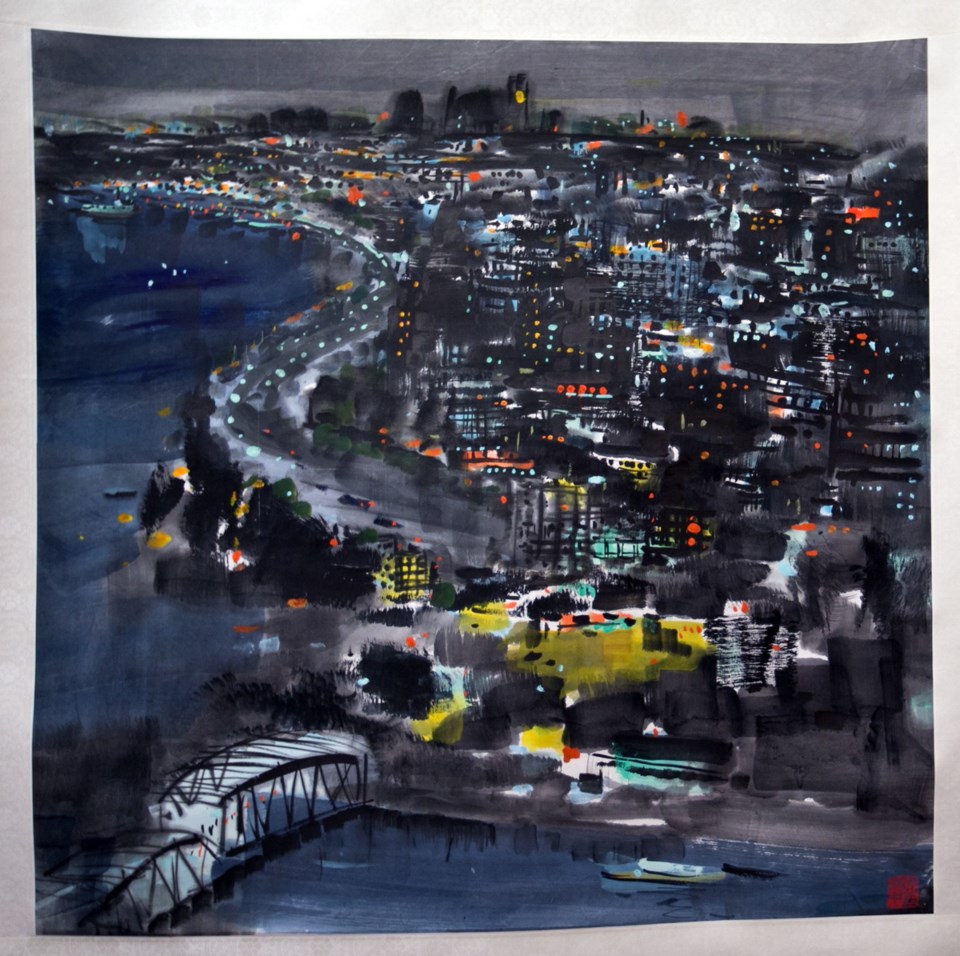Barry Till, curator of Asian art at the Art Gallery of Greater Victoria since 1980, is coming up to retirement and seems determined to show us as much as possible of the fabulous collection for which he is responsible. He has just hung up 39 Chinese landscape paintings from the 20th century. The artists include all the great names of this genre, drawn from the gallery’s collection of more than 10 times that number. Even if you think you don’t like Chinese paintings, I recommend a visit.
Chinese art, both antique and contemporary, now completely dominates the auction markets globally. The European old masters are all in museums. Those priceless Chinese antiques that came to the West during the political upheavals of the 20th century are now being bought back by the new Chinese capitalists. In the always-unpredictable word of contemporary art, the Chinese are everybody’s favourites (Ai Wei Wei, anyone?) and are attracting unbelievable prices. Here in Victoria we were “early adopters” of modern Chinese art, and have an extraordinary opportunity to recalibrate our art tastes.
In large measure, this is due to one man. Brian McElney is an English-born lawyer who lived and worked in Hong Kong from 1956 to 1992. During that time, he avidly collected Chinese ceramics and jade, and discovered the field of modern painting was wide open. “As it soon became obvious that price-wise the category was taking off,” McElney wrote, “I resolved to obtain one good representative example of every artist who I thought to be worth collecting, who was living or had died in the 20th century.” Upon retirement, McElney established a superb small museum for his antiquities in Bath, England. He gave the 20th-century paintings — about 350��in total — to the Art Gallery of Greater Victoria.
The last great period of Chinese painting was, admittedly, several centuries in the past, and for 700 years the art has been dominated by endless copies of past paintings and styles. When, in the 20th century, the artists travelled from China to the West and art books became widely available, a flood of inspiration poured in. Ink painting was enriched with new subject matter (power pylons and the Long March), new perspectives and new techniques for working with ink and paper. A unique combination of time-honoured calligraphic tradition, Socialist Realism and the world of modern art resulted in an extravagant diversity. By comparison, Western painting seems to have reached a dead end with the self-reflexive ironies of Andy Warhol.
McElney’s first acquisition was a watercolour by Fu Baoshi (1904-1965), now one of the most sought-after artists of the 20th century. Though at a glance it is a typical mountain landscape, the broadly organic texture of the “brushwork” appears to have been done with something other than a brush — perhaps a lotus stem or a rag. Another painting that refers to the old styles is a copy of a painting by Ni Zan (1301-1374) by Zhang Daqian (1899-1983), a brilliant copyist — and forger — who worked in numerous historical styles and spent his later years in Brazil, California and Taiwan. His modern work with poured ink and colours is unequalled.
Wu Guangzhong (born 1919) is now esteemed as one of the leaders of Chinese painting. Victoria has two superb artworks by Wu, one of Peking rooftops, the other of Shanghai by night. The compositions owe something to the flattened impressionism of Cézanne, while the random splatter and energy remind me of Miro or Jackson Pollock. Since the Victoria paintings were created, Wu has forged a brilliant and unique synthesis of antique compositions, his endless lines of brushwork spattered with a veritable confetti of coloured dots.
Li Keran (1907-1989) became famous, and was then persecuted, for his “heavily framed with dark ink and strong colours” style of landscape. One can trace a line between this work and the huge view of the deep jungle overarched with acres of rich yellow tempera trees, painted in Victoria by Zhang Bu. Zhang lived here for 10 years during the 1990s, creating work of extraordinary strength and colour which was sold through his gallery in Tokyo. On his return to Beijing he was honoured with a solo exhibition at Beijing’s art museum.
Joan Stanley-Baker, the brilliant first curator of Asian art in Victoria (1975-1980), introduced me to the superb painter C.C. Wang (Wang Jiqian, born 1907). Wang grew up in the hyper-literate art world of Suzhou. As a connoisseur, he was consulting curator for China’s Imperial Palace art collection just before it was sent to Taiwan in advance of the communist takeover in 1949. Moving to New York at that time, Wang became the most important source of Chinese art outside China. Much of his personal collection of classic painting now belongs to the Metropolitan Museum of Art. Living in New York through the evolution of abstract expressionism, he saw parallels to the “great tradition” of Chinese painting, the ancient and vigorous form of ink painting which pertained before the scholars channelled it into an effete form of brushplay.
When Wang stepped out as a painter in the 1960s, he soon found ways to create “natural” textures through crumpled and monoprinted marks in which he could imagine marvellous geology. Upon this allusive matrix he inscribed markers suggesting wonderful compositions. Though not especially large, the four Wang paintings we own convey a continental sense of scale, where wide ranges of mountains hide tiny villages bathed in an atmosphere of unearthly hue. At once fully abstracted and, eventually, realistic, these paintings re-establish long forgotten traditions and invent new paths for Chinese painting to follow.
While painting in the West has stalled, or entirely lost its way, Chinese art is discovering new strength. These painters are worth getting to know for it is in this way the art of the world has been moving forward.
��
Chinese Landscape Paintings of the 20th Century, at the Art Gallery of Greater Victoria, 1040 Moss St., 250-384-4101, aggv.bc.ca, until June 15.



